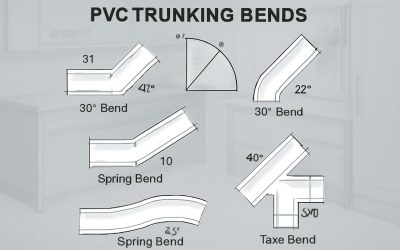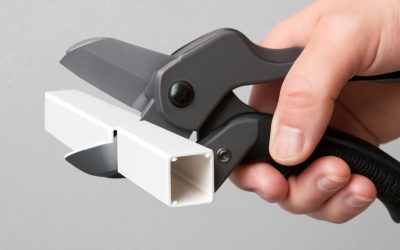
Cable trunking is a system of enclosures for electrical cables used to protect them and create space around them. This enables the cables to be neatly stowed away and makes it easy to keep them tidy and unobtrusive.
It can also reduce the risk of electrical fires and electric shocks occurring, particularly in areas where cables are prone to water or moisture exposure. These include kitchens and bathrooms, where water is more likely to get in contact with electrical wiring.
A trunking system can also help to reduce the likelihood of dust accumulating on wiring, which is an additional safety concern. As well as reducing the likelihood of dust being inhaled, trunking also prevents wires from becoming tangled up together and increasing the chances of sparking or burning.
The most common type of trunking is plastic, but there are also a variety of metal and wood alternatives available. These are usually more durable than plastic versions and offer greater protection against damage.
Many types of trunking are also made with antimicrobial properties, which can help to reduce the spread of harmful bacteria by disrupting their key cell functions and thereby preventing them from reproducing. This can be useful where the material of the trunking is subject to regular cleaning, as it helps ensure that any potential bacterial build-up is minimised.
Choosing the right type of trunking depends on the type of installation and the number of cables that need to be routed through it. For instance, if you’re installing a new network in a commercial setting and need to run many cables from the central office to various locations, you’ll want a system that’s made from corrosion-resistant metal such as galvanised steel or stainless steel.
If you’re going to be running cables in an area where there is a high level of moisture or exposure, such as an attic space or kitchen, then you’ll need a fireproof trunking option. These can be made from a range of materials and feature a tamper-proof seal.
It’s also possible to buy trunking that comes in a range of lengths, which can make it easier to plan ahead and save money. Typically, these will be available in 5m, 10m, or 20m lengths.
There are also a number of different widths and sizes that can be chosen to suit the individual needs of the installation. For example, if you’re planning to run multiple cables along a ceiling, you might want to look at wide-diameter trunking, which can maintain plenty of airflow to dissipate heat and ensure the insulated cables don’t become overheated.
Trunking is often used in commercial settings as a way of routing wiring into and out of machines, but it can also be used to run wiring inside buildings and in offices. It’s a great way to create a safe and organised workplace where all cabling is stowed away in one place, making it easier to locate and access if there are any problems.



0 Comments